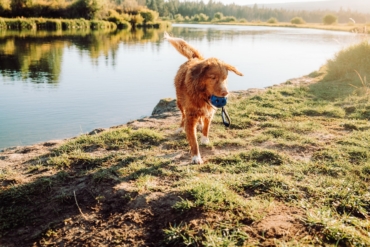A new kind of Everest record now belongs to Roxanne Vogel, a GU sports nutritionist. She departed her coastal California home on May 10, summited the world’s highest peak on May 22, and returned to California on May 24.
Roxanne Vogel, a nutrition and performance research manager at GU Energy Labs, just set a new world record climbing Everest. The 33-year-old San Diego native departed California on May 10, climbed the world’s highest peak via the North route from Tibet, then returned to California on May 24. No other climber has reached the mountain’s 29,029-foot summit in such a short window of time.
Lydia Bradey of Alpenglow Expeditions guided Vogel’s climb. Vogel chose Bradey — the first woman to summit Everest without oxygen and a five-time Everest summit veteran — because she wanted to climb with a female guide.
“Lydia was amazing,” said Vogel. “We had such a great time together. I couldn’t have asked for a better guide or friend. Her level-headedness in decision making got us to the summit.”
But most of Vogel’s journey took place well before the actual climb. In April 2018, she returned from climbing the Carstensz Pyramid in Irian Jaya, and she started training for Everest. Since January 2019, she worked with coaches from Uphill Athlete, owned by mountaineer Steve House and elite trainer Scott Johnson.
“I got into shape that none of us thought possible,” said Vogel.
Training for a Speedy Everest Summit
Vogel, who is originally from San Diego, grew up a beach kid in a non-outdoorsy family. She studied abroad in Peru; then, in 2012, she trekked in Nepal to Everest Base Camp on the south side of the mountain. “I was blown away by the experience,” said Vogel. “It was then and there I decided I wanted to be climbing big mountains, not trekking around the base.”
She moved from North Carolina to Colorado so she could climb and mountaineer full-time. She climbed Denali, Aconcagua, Kilimanjaro, Elbrus, Kosciusko, and Carstensz Pyramid, among others.
During the last 3 months of her training, she spent a minimum of 12 hours a day in a high-altitude- simulating hypoxia tent. Vogel even did this at work, where bosses and colleagues were super supportive of her project.
“If I worked anywhere else than GU, or had a different role, none of this would have been possible.”
On previous climbs, Vogel had worked on speedy ascents of the peaks she wanted to climb. With limited paid time off, she wanted to be able to climb more peaks. “I had cut the ascent time by 50 percent on a 23,000-foot peak in South America,” said Vogel. “I did an ascent in Ojos del Salado in Chile in 5 days — it normally takes 15. And in Ecuador, I climbed the three highest volcanoes in 5 days, which usually takes a couple of weeks.”
Vogel had reached out to Adrian Ballinger, owner of Alpenglow Expeditions, for advice on tents and chambers for acclimatizing as she worked on speed ascents of other climbs. Ballinger had experience with similar climbs.
In one conversation, he mentioned he was looking for the right person to do a lightning ascent on Everest.
“It sparked my interest,” said Vogel.
High-Altitude Guinea Pig
And her interest was both personal and professional. Vogel was her own guinea pig for high-altitude nutrition research.
“A fun part of this project for me was coming up with a custom nutrition plan and products,” said Vogel. “I worked with GU’s talented team of product developers, who helped me make products to take with me to the mountain to help with high-altitude acclimatization, mental acuity, and better oxygen delivery to the muscles.”
 Vogel wasn’t willing to get too into the details, but her high-altitude nutrition included mushroom blends (to help with acclimatization), ketones, and a high-calorie, nutrient-rich snack she dubbed the Everest Bar.
Vogel wasn’t willing to get too into the details, but her high-altitude nutrition included mushroom blends (to help with acclimatization), ketones, and a high-calorie, nutrient-rich snack she dubbed the Everest Bar.
GU doesn’t currently plan to have a line of high-altitude nutrition products. But Vogel said that as a result of her research, she and her team at GU could possibly develop products to better fuel someone running their first marathon or help pilots stay fed and focused.
According to Vogel, she and her guide were the only climbers to summit from the North side of Everest on May 22. She and Bradey followed about 30 minutes behind a Sherpa team responsible for fixing ropes used by climbers for the season. Typically, a climbing team waits until Sherpas establish fixed ropes before they start their summit push in case the rope-fixing team isn’t able to complete their task.
Vogel and Bradey took the risk because Vogel was running out of time to reach her goal. She left California on May 10 and arrived in Tibet on May 12. Travel had already eaten up 2 of her 14 days. Then she sat and waited.
“It was really windy and cold all over,” said Vogel. “I was really skeptical we’d make it. I told Lydia I didn’t think the 14-day climb was gonna happen. The weather model kept changing. We were looking at May 24th or 25th for a summit bid. I decided that it didn’t matter if I made it to the top within the 14-day window or not.”
Then Vogel and Bradey saw a possible weather window that could get them back to base by May 23, leaving Vogel time to get home.
“I knew the ropes weren’t fixed, and I knew we might have to retreat 500 feet from the summit,” she said. “Adrain Ballinger, founder and head guide of Alpenglow Expeditions, said it was up to Lydia and me if we wanted to take the chance, and we did.”
Firsts on Everest
According to Vogel, despite the fact that she’s already climbed several of the world’s highest peaks, there were a lot of firsts for her on Everest. “Getting to wear the puffy down suit — that was an event in and of itself,” she laughed. It was also Vogel’s first time climbing with oxygen, and her first time over 23,000 feet.
Seeing dead bodies on the route was also a first for Vogel. “Nothing prepares you for that,” she said.
Another jarring experience for Vogel was when, on the final steep pitch to the summit, an anchor that was just installed and that was supposed to keep climbers safe as they ascend popped out as soon as her team weighted it. “There was a 10,000-foot drop-off,” said Vogel. “That put the fear of God in me.”
Vogel reached the summit, and she and her team were alone. Vogel wrote on her Instagram page:
“At 11:45 am local time, my friend and hero @lydiabradey and I summited Mount Everest (8848 meters/29,029 ft), the first climbing members to reach it from the Tibet side this season, just as the rope-fixers finished putting up the final 500 vertical feet of lines. They hugged and high-fived us as they descended, leaving us alone with our two Sherpas, Mingma Tshering, and Pasang Tendi, on the summit, an incredible and almost non-existent experience. We climbed from camp 2 at 7700 meters, departing late by Everest standards at 1:45 AM, to give the rope fixers time to finish their work. No one else climbed from the north side that day. We were so fortunate to have the mountain all to ourselves. Hard to believe, still processing.”
In the mountaineering world, you haven’t had a successful summit until you make it back to base camp. Many climbers die on the descent when exhausted.
Vogel and Bradey reached the summit from Camp 2, not Camp 3, in order to save time — a 15- to 16-hour day. They had a brief 8 hours to rest before another massive effort, the summit push, and return to Camp 2.
“On summit day, I was honestly pretty tired a few hours in,” said Vogel. “We hadn’t had enough rest, I was wearing an oxygen mask for the first time, which made it hard to eat or drink, and coming down was really hard.”
Typically, a team might rest an extra day at a low camp before descending to base camp, but Vogel was on a schedule. She and Bradey descended to Base Camp, a 13-hour trek, the day after they reached the summit. Her shuttle picked her up 2 hours later and raced her the 8-hour drive to the nearest airport.
Racing Home From Everest
Vogel says that as she was sprinting through the airport in Chengdu China with giant bags of climbing and mountaineering gear, finally boarding her on-time flight, she was thinking, “I don’t know what I did in life to deserve the luck I had that day, but the universe is helping me out right now.”
“Alpenglow Expeditions has been working to shorten Everest expeditions since 2012. From 70 days to 35 days to 23 days, and finally, this year, to 14 days door-to-door,” said Ballinger. “Through a combination of pre-acclimatization, perfected logistics, oxygen management, and high-tech weather forecasting, combined of course with the athleticism of Roxanne, we were able to pull off the fastest Everest expedition yet!”
“I think the way I was able to do this successfully was a combo of three factors: training, preparation, getting to the most fit I’ve ever been,” said Vogel. “It was like a part-time job. Planning for nutrition in an innovative way was another key part. So was working with Alpenglow and using their logistics. It was all those things together that let me be successful. It was a life-changing event. I don’t know if many people would put their life on hold for something like this — that’s what I did for the last 4-6 months. And I have no regrets. It was amazing.”
Now in her first week back home, Vogel isn’t quite sure what to do with herself. “I’m not training, I’m not sleeping in the tent — I am a little lost,” she said. “At times, I didn’t think there was any way I was going to be able to manage this feat. I am blown away we made it happen. This is full circle for me. I came back and finally climbed Everest.”
Learn more about Vogel’s training program here.







